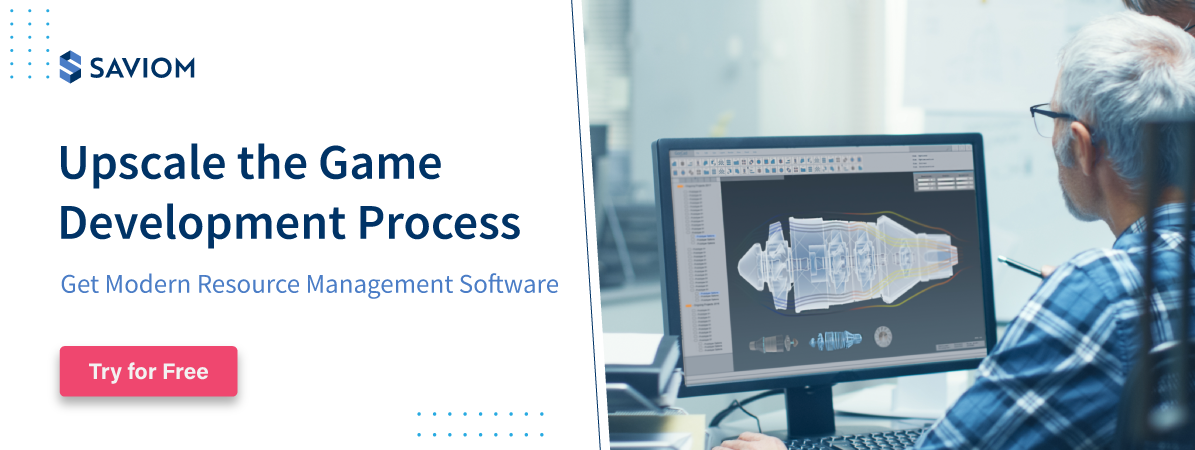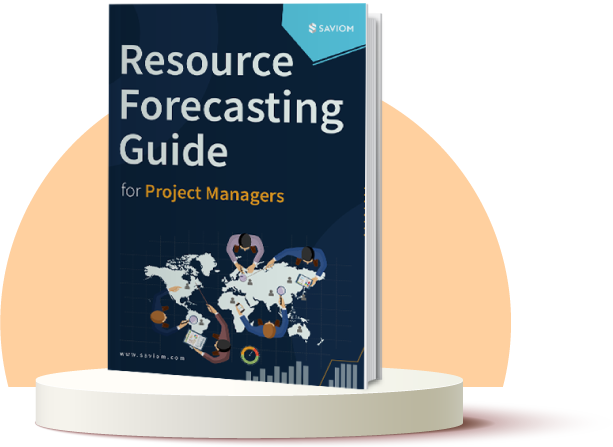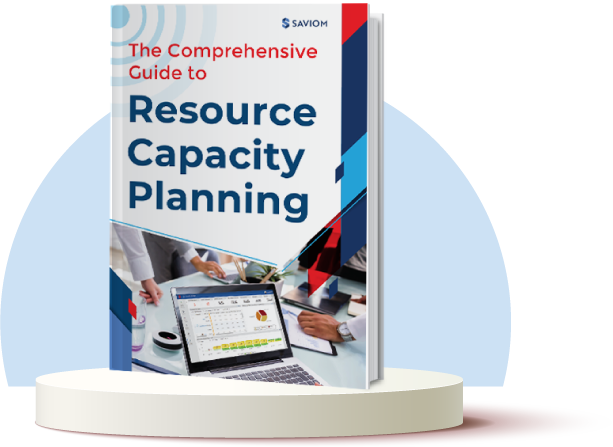The gaming industry has transformed from its early days of computer games to mobile and console games over the years. There are also rapid technological advancements in game platforms and game engines in recent times. It has created a need for a highly-skilled workforce.
The rise of e-sports and the emergence of virtual reality and Artificial Intelligence (AI) enabled gadgets like Oculus VR headsets have captured the entire gaming world’s attention by empowering gaming diversity.
Game giants like Electronic Arts (EA), Sony, Epic Games, Activision, Nintendo, Ubisoft, and many more are amongst the top players who are keeping up with the pace by upscaling their current game development framework.
According to Statista, “The global video game market’s value will rise to nearly 130 billion USD in 2021.”
The release of Amazon’s cloud gaming service ‘Luna’, a rollout of 5G, especially in Apple’s key market, i.e., The US, China, and Japan, and the advent of more IP-based mobile games paved the way for creative gaming. It will have a significant impact on game publishers, developers, and other advertising stakeholders.
Notably, video game development is becoming increasingly complex. It includes the design, development, marketing, and sales of video games and interactive experiences across all digital platforms. From arcade machines to computers, home, and handheld consoles, to mobiles and tablets, the realm of video games is covering it all.
Therefore, the gaming producers (who are also referred to as project managers) should invest in a resource management solution with advanced capabilities that can become a game-changer in fast-tracking the development cycle.
This article focuses on the gaming industry’s future and how the right tools and techniques can complement its success.
Different Roles in Game Development:
Game development is a sequential process that requires a highly competent team of niche-skilled resources. It holds different roles on the field’s technical and creative sides, such as modeling to art design, programming, and more.
Here are some defined roles in game development:
Production:
The Game Producer or Associate Producer is responsible for ascertaining that the right resources (Developers, designers, programmers, animation artists, etc.) are working on the right development tasks and leverage their expertise to maximum potential. They also work closely with Game Publishers for marketing and quality assurance (testing). Overall, the onus is on game producers to take the game to the finish line with the best quality.
Art & Animation:
Artists like Concept Artist, 3D animator, Technical Artist, SFX Artist, Character & Environment Artist are highly skilled with 3D graphics software as they work closely with the lead programmers. They render environments or maps, implement texturing in gameplay systems, and facilitate graphic-programs like pixel shaders, giving other team members a visual guide for the game’s overall look and feel.
Design:
The creative team of designers with their skills in Adobe Photoshop & Unreal Engine, next-gen AR frameworks, 2D and 3D modeling bring users into an alternate reality by adding intriguing narratives, user interface design, and strong characters to the game. The Gameplay Designer, Level Designer, UX/UI Designer, and Creative Designer are game designing disciplines.
Programming:
Game programmers primarily develop codebases for video games. Graphics programmer, engine programmer, gameplay programmer (physics & graphics programmer), AI Programmer are some of the game disciplines.
For instance, AI Programmers have implemented artificial intelligence heavily in Assassin’s Creed and Civilization III to simulate enemies and opponents.
Audio Effects:
The audio engineers lay down special sound effects in the game. They are usually trained in digital signal processing and implement sounds as a primary feedback mechanism. For example, The sounds in the PUBG Mobile game during an action scene, interaction with characters, objects, and events are created by sound engineers.
Quality Assurance:
QA lead Analysts and QA Testers are the resources responsible for finding inconsistencies, bugs, or glitches in the game. They are involved in bug tracking frameworks, including test cases, test suites, bug documentation, etc. Mostly, game testers are platform-specific like PC, PlayStation, Xbox, Nintendo Switch, Mobile and undergo black box testing and white box testing.
Given the vivid roles involved and complexities of video game development, it is clear that each game development platform is unique and substantial learning is required to acquire the skills. Therefore, game producers must also ensure that the niche resource skills are diversified, and other resources are cross-trained to maintain a skilled resource pool.
There are only two ways managers can get the right resources with a defined skill set. One is lateral hiring which is often very expensive, and the other is developing the skillset with internal training and on-the-job learning.
Here is how you can implement and conduct in-house training successfully,
Strategy to Develop an in-house Training Program
Retaining talent and skilled resources is the key for any gaming company to improve and grow a team over time. Hiring young programmers and getting them through the game development process is only half the battle; managers must also frequently train them to keep up with the emerging technology trends and in-demand skills.
The in-house training models and other development programs help to cross-train resource pools. It also ensures quality game delivery and keeps the resource talent progressing.
For example, a game developer programming in Unreal Engine for PC games can be cross-trained to work in Blender, Unity Engines for Console, or Mobile platforms. A graphic engineer can be trained to fix user interface bugs apart from designing and modeling works.
An effective in-house training schedule eco-system enhances resource allocation efficiency and reduces resourcing costs significantly.
It is challenging to schedule and run training programs of resources manually. Thus managers must use a training schedule software to intelligently manage all the training programs related to technology building games, walkthrough of new equipment, etc.
The tool helps to achieve agile scheduling for multiple users across the enterprise. A competent trainer (Expert developer/designer) with the right skills can be allocated to train young programmers and designers. It also provides a multidimensional view in real-time to analyze the training schedule through multiple dimensions (locations, trainers, expertise, training rooms, course, etc.)
The training and development programs avoid last-minute hiring of scarce niche resources like animators, game engine developers, AI programmers, level designers, etc., and improves the overall utilization of training resources.
Various Stages of Game Development Process:
Due to the global outbreak of the COVID-19 pandemic, the software game industry (SGI) has witnessed unprecedented growth, with many trends helping engagement spike worldwide. Meanwhile, mobile gaming also saw the highest positive impact from the lockdowns, but it is still challenging for developers and publishers to retain the influx of new players in 2021.
Newzoo Games Market Report, “More than 2.8 billion gamers worldwide will help the global games market to generate $189.3 billion in revenues.”
The success of games like Candy Crush, Subway Surfer, Call of Duty, Fortnite, and PUBG has shown how profitable mobile games can be. Thus, to stay afloat and maintain the competitive edge, game developers must bring innovative, high-quality games to the market. To achieve the same, they must follow a game-development framework.
Now, let’s define the Game Development Life cycle (GDLC), which consists of three different phases:
- Pre-production:- It includes project planning, early prototyping, resource planning, forecasting project demand, sourcing niche resources, and resource scheduling.
- Production:- The production phase is the primary development phase which consists of modeling, designing, developing, rendering, and quality control.
- Post-production:- It is the last stage of game development that constitutes QA testing, alpha/beta releases, debugging, marketing & advertising
Identifying and strategizing on the following critical success factors will help developers mitigate the common pain points:
Project Planning
The game framework planning serves as the backbone for the entire game development process. The project planning stage involves various step-by-step techniques like creating a game concept, choosing a game platform and engine (Unity, Unreal, Lumberyard, etc.), and developing a Game Design Document.
One of the challenges in planning a game development project is to deal with continually changing requirements during the development phase.
When project managers follow an agile approach and divide the development activities into smaller sprints, it is possible to formulate a full-proof plan. Work breakdown structure (WBS) is an essential project deliverable that organizes teamwork into manageable components.
EA, Microsoft, Sony, Ubisoft, and other large game companies are highly process-driven and require heavy documentation. It is the main reason how they achieved success over and over again.
From the project scope to defining the project resource demand, the WBS covers it all. In the gaming world, WBS is known as the Game Development Documentation (GDD). When all the nitty-gritty of the game development processes are noted down, it is easy for managers to go back and refer to the document to ensure that the activities can be tracked as per the plan.
Let’s understand the GDD in-detail here,
Game Development Documentation:
The game development documentation or GDD is a holistic document formulated for every game project that streamlines the development process. This document depicts a WBS inclusive of the project scope, deliverables, resource demand, features, financials, task details, and deadlines.
For example; The GDD of a game in the development stage will cover information about the team roles, genre, interaction with the elements, technical requirements, expositions, player interface, core game mechanics, Inventory, enemy AI, game testing phases, etc.
In a nutshell, GDDs builds the game plan foundation and describes the two critical milestones in the ‘Alpha & Beta’ stages.
- Alpha Testing Stage: Alpha testing is done parallelly with the development phase. All the immediate issues and bugs are fixed at this stage.
- Beta Testing Stage: At this stage, the game is almost production-ready. The bugs and glitches collected from the QA testers and end-users are addressed in beta testing.
A comprehensive GDD also serves as a prototyping tool framing the requirements engineering in the game development process.
If done manually, planning this task-intensive development process can be tedious and prone to human errors. The right tools and management techniques can help managers run multiple simulations based on all the critical factors.
The what-if analysis feature of a tool helps simulate the project within the game constraints and enables managers to form the best scenario-based plan. In short, it allows you to get the best return on investment within the existing conditions.
Resource Planning and Scheduling
Once the project attributes are documented, the next crucial step is formulating a project resource plan to ensure that the right person is working on the right task. Game development usually requires resources from the heterogeneous disciplines of creative and technical talent, e.g., game designers, artists, programmers, QA teams, and software developers.
Resource planning enables managers to define the resources and skillset needed to fulfill the gaming project resource demand.
For instance, you are developing a First-Person Shooter game in the Unreal Engine, which will feature a first-person shooter controller, enemy AI, and various other mechanics. Here, game producers or project managers will look after the GDD, examine the requirements, and evaluate niche skills’ resource demand. The resources needed for this particular game project include the developer’s experience with FPS creation in Unreal Engine, AI programmers, level designers, Animators, character designers, etc.
A resource management tool can help managers identify and allocate competent resources across the enterprise as per the WBS. This scheduling can be done in real-time by multiple stakeholders, which eliminates any chance of double-booking.
It will also provide powerful forecasting capabilities and real-time analytics to identify shortfalls and excess resources ahead of time.
This data-driven approach helps managers gauge the skill gap and implement appropriate resourcing treatments to bridge the gap. It also helps maximize the billable and effective utilization of resources and build an optimized and balanced workforce.
Game Development
Production is one of the most challenging video game development stages as it primarily involves game designing, level creation, and intense programming.
In this stage, developers code all in-game content, designers render and iterate character models, level designers create environments that are dynamic and immersive, sound engineers ensure to pop proper feedback when a character interacts with any elements. The project managers check the milestones and schedules, providing each resource is held accountable.
Thus, it involves cohesive multidisciplinary team efforts and functions (including sound, gameplay, art, artificial intelligence, control systems, and human factors) to develop an innovative product. But how do you enable collaboration between inter-departmental resources spread across different geographical peripheries for successful game development?
One needs to implement an in-built collaboration solution to enable active communication between teams. It leads to quick problem solving and task completion within specific time frames as each resource will know the severity of the task. Overall, effective team management in the production stage sets a precedent for the outcomes expected to align with the game objectives.
Game Asset Management
UI and UX assets are the critical and core components of game development. These assets contribute to the visual appearance, such as artwork (including 3D elements or textures), music, sound effects, dialogue, text, etc. It includes game and pixel characters, game icons, explosion packs, virtual coins, game backgrounds, user interfaces (RPG, hyper-casual, etc.), game kits, and props that can be purchased via Game Engines.
Developers can acquire assets through Unity Asset Store, Epic Games Store, Envato Market, Unreal Engine Marketplace and manage efficiently through asset management tools. For example, you are developing a game that requires 2D/3D designs, accessories for game characters, vehicles, weapons, environment models, etc. This tool will help you schedule assets and streamline asset borrowing, saving time for many developers.
Manual management of assets is tedious and can be chaotic, especially when multiple teams require the same assets. Thus, it is ideal to invest in a sophisticated asset management tool that can integrate with the existing system and allows seamless regulation of the assets. It helps game producers to identify the right investment in the development phase, keep track of running costs and make a single schedule for all assets without double bookings.
The single version of truth provides visibility to all the developers, game artists, designers, etc., about the allocation of assets. Thus, the appropriate game asset management not only eliminates the potential bottlenecks in the development phase but also identifies the asset excess or shortfall ahead of time.
Quality Control
Quality control aims to develop a game with engaging gameplay and a flexible, user-friendly interface. It is a crucial project success factor that ensures that each workstream is progressing within the scope of project planning or GDD. Testers are accountable for testing the game mechanics (UI, physics, art, gameplay, level playability, localization, compatibility, etc.) and then report it to the development team for debugging.
It is imperative to note that quality control is complementary to the game development phase.
Quality control is limited to the game’s technicalities and ensures that the project metrics align with the GDD. For instance, if the project costs go beyond the stipulated budget, managers can step in and take remedial measures before it restricts further development.
They can procure forecast vs. actual reports for multiple metrics using the tool and recommend necessary actions to eliminate the roadblocks well in advance. The early warning system also helps gaming producers check quality metrics and make informed decisions.
Review & Process Improvement
Every project plan is a work in progress (WIP) which means there is always a scope of improvement based on current trends and work practices. In the agile game development process, project managers must continually review the process, take feedback from their peers to gain a different perspective, and make the necessary changes.
This practice fosters team engagement through group discussions and makes the employees feel valued in the firm. It facilitates proactive decision-making that will allow you to overcome risks and challenges within the development phase. Thus, a game roadmap review is essential to deliver the highest quality possible within the constraints.
The prototype, first playable stage, pre-alpha, alpha, beta stage, and post-beta are some of the milestones reviewed by project managers after the game hits through the development processes.
With the unified Gantt chart view and real-time data of the tool, game producers can enhance the task progress, team performance, and projects’ health index seamlessly. Business intelligence and reports with role-based access help build a customized dashboard to view relevant information and make informed decisions. Forecast vs. actual reports helps to rectify the current mistakes and form a better project for the future.
Conclusion
Video game development is a whirl of a process, even for most established gaming studios with hundreds of employees. Often, game producers overlook the importance of implementing a resource management tool. Without the right tool and techniques, planning, allocating, and managing a successful team to deliver the game on time and within budget can be challenging.
It’s important to realize that roadblocks in the development phase are inevitable but having a robust project and resource management strategy separates good gaming companies from great ones- regardless of the project scope.
We have discussed how a robust resource management solution can help managers optimize production methods. It provides a semantic way of project planning, resource planning, scheduling, and monitoring the project to stay on schedule and within budget. It also aims to improve operational efficiency to deliver immersive experiences for the end-users.
So what different strategies are you implementing for effective resource management in your game?
The Glossary
The SAVIOM Solution
SAVIOM is the market leader in offering the most powerful and configurable solutions for managing enterprise resources efficiently and effectively. Having more than 20 years of experience, this Australian-based MNC has a global presence in over 50 countries. It is also popular with more than 100 customers and helping them to achieve their business goals. SAVIOM also has products for project portfolio management, professional service automation, and workforce planning software which can be easily customized as per business requirements.

















